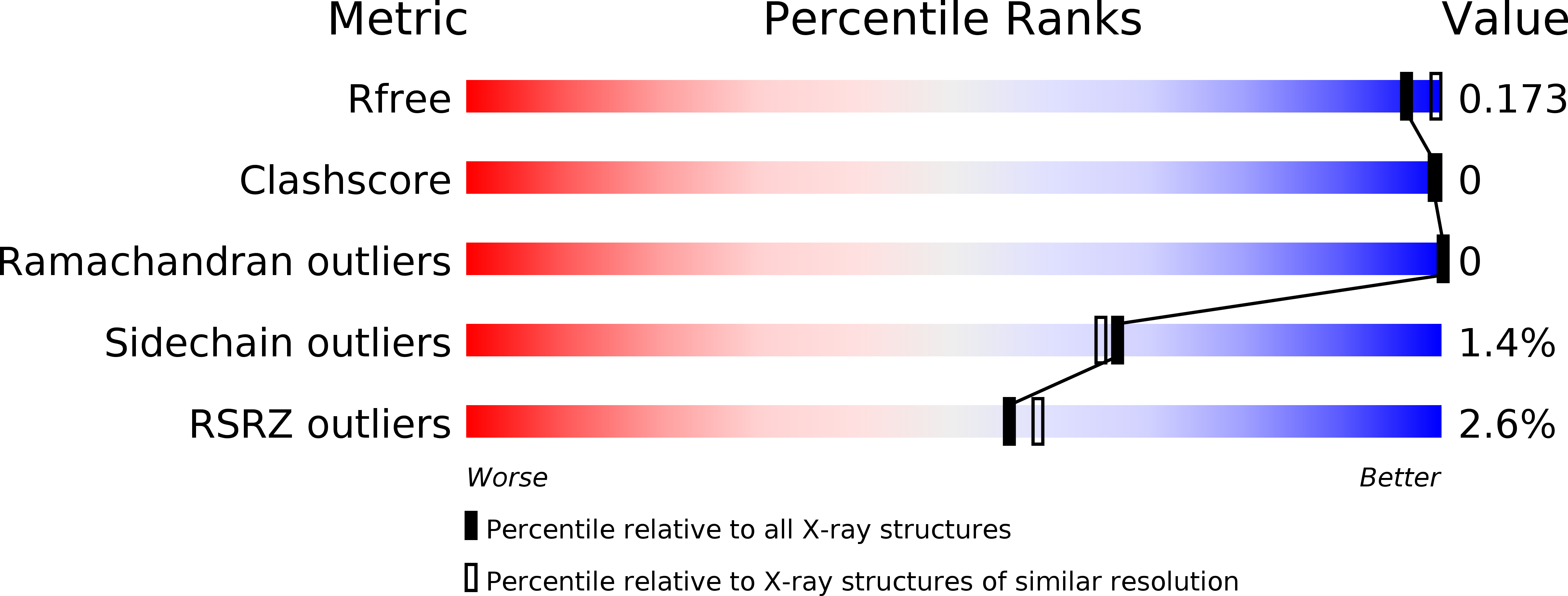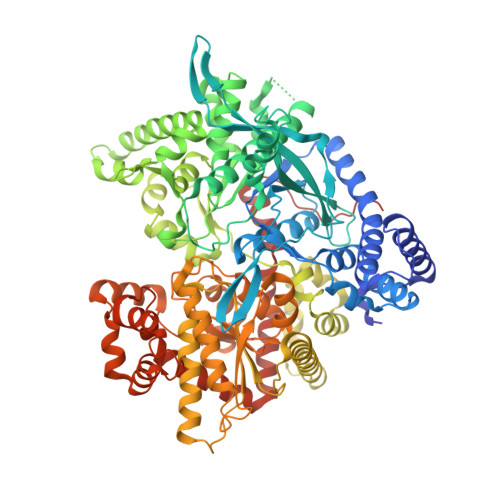Probing the beta-pocket of the active site of human liver glycogen phosphorylase with 3-(C-beta-d-glucopyranosyl)-5-(4-substituted-phenyl)-1, 2, 4-triazole inhibitors.
Kyriakis, E., Solovou, T.G.A., Kun, S., Czifrak, K., Szocs, B., Juhasz, L., Bokor, E., Stravodimos, G.A., Kantsadi, A.L., Chatzileontiadou, D.S.M., Skamnaki, V.T., Somsak, L., Leonidas, D.D.(2018) Bioorg Chem 77: 485-493
- PubMed: 29454281
- DOI: https://doi.org/10.1016/j.bioorg.2018.02.008
- Primary Citation of Related Structures:
5OWY, 5OWZ, 5OX0, 5OX1, 5OX3, 5OX4 - PubMed Abstract:
Human liver glycogen phosphorylase (hlGP), a key enzyme in glycogen metabolism, is a valid pharmaceutical target for the development of new anti-hyperglycaemic agents for type 2 diabetes. Inhibitor discovery studies have focused on the active site and in particular on glucopyranose based compounds with a β-1 substituent long enough to exploit interactions with a cavity adjacent to the active site, termed the β-pocket. Recently, C-β-d-glucopyranosyl imidazoles and 1, 2, 4-triazoles proved to be the best known glucose derived inhibitors of hlGP. Here we probe the β-pocket by studying the inhibitory effect of six different groups at the para position of 3-(β-d-glucopyranosyl phenyl)-5-phenyl-, 1, 2, 4-triazoles in hlGP by kinetics and X-ray crystallography. The most bioactive compound was the one with an amine substituent to show a K i value of 0.43 μM. Structural studies have revealed the physicochemical diversity of the β-pocket providing information for future rational inhibitor design studies.
Organizational Affiliation:
Department of Biochemistry and Biotechnology, University of Thessaly, Biopolis, 41500 Larissa, Greece.





















